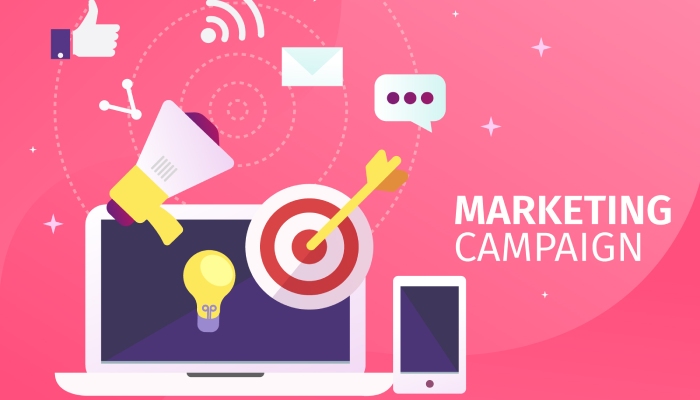AIDA Framework: The Essential Model for Effective Marketing Strategies
In the crowded marketplace of ideas and products, grabbing a consumer’s attention can feel like trying to catch smoke with your bare hands. But what if there was a roadmap designed just for that? Enter the AIDA framework—Attention, Interest, Desire, and Action—an age-old model that has stood the test of time. Developed over a century ago, this simple yet effective structure guides marketers in their quest to turn casual onlookers into loyal customers.
Think of it as a journey; one where each stage builds upon the last, helping brands create meaningful connections with their audience. As we dive deeper into the heart of AIDA, we’ll uncover its origins, relevance in modern marketing, and how you can use it to captivate your own audience.
The AIDA framework stands for Attention, Interest, Desire, and Action, outlining the stages a consumer goes through from awareness to making a purchase. By effectively capturing attention and nurturing interest and desire, marketers can drive prospects towards taking action, making this model a fundamental tool in developing persuasive marketing campaigns.
Origin of the AIDA Model

The creation of the AIDA model marked a pivotal moment in marketing history. Developed by Elias St. Elmo Lewis, this framework emerged during a time when advertising methods were relatively primitive, largely limited to word-of-mouth and black-and-white newspaper ads. Nowadays, it’s hard to imagine a world without the internet or social media; back in 1898, telephones were still seen as luxury items. Marketing campaigns relied on bold print and catchy phrases to convey messages, literally vying for attention amidst the noise of competing advertisements.
In this context, Lewis’s innovation wasn’t just about crafting persuasive sales copy; it was about organizing that copy into a coherent structure that addresses the consumer’s psychological journey. By defining four key stages—Attention, Interest, Desire, and Action—he created a blueprint for marketers that would guide consumers from mere awareness to a decisive purchase.
Early advertisers employed these principles by using striking headlines paired with captivating narratives to draw readers in. For instance, they crafted stories around their products, promoting not just what was being sold but why it mattered.
One classic example from this era involved a local bakery that used humor and relatable situations in its ads. It captured attention with a humorous line like “Hungry? Don’t make your stomachs scream,” which drew readers in instantly.
Once they had captured the customer’s attention, they built interest by highlighting fresh ingredients and engaging preparation techniques, creating an emotional connection around the food and enticing potential buyers. This storytelling method fulfilled the first two stages of the AIDA model effectively.
It’s fascinating to think about how revolutionary this structured approach was at the time; it didn’t just change how ads were created, but how they were perceived by customers.
As we observe how this model laid the groundwork for modern marketing practices, it’s important to note that while technology has advanced dramatically since Lewis’s time, the core principles of AIDA remain timeless. In today’s digital landscape—where platforms like TikTok and Instagram dominate—the essence of capturing attention, sparking interest, evoking desire, and prompting action continues to resonate with audiences around the globe.
Building on these foundational elements sets the stage for understanding how to captivate audiences effectively through strategic marketing techniques.
Attention: Captivating Audiences

The first stage of the AIDA framework is all about grabbing the viewer’s focus. In a world overloaded with stimuli—be it advertisements flashing on screens, colorful packaging on store shelves, or the myriad posts scrolling through social media—a marketer’s challenge is to stand out.
According to research, the typical consumer’s attention span now sits at a mere 8 seconds. That’s hardly enough time to read a catchy headline, let alone appreciate a detailed advertisement. Therefore, marketers must act decisively and creatively to get their audience’s attention before it flitters away.
One effective strategy for capturing attention is through eye-catching visuals. Studies suggest that 80% of consumers are more likely to remember brands that use compelling images in their marketing materials. This means an image of a serene fireplace can draw a potential customer into a narrative about warmth and coziness faster than words alone ever could. Combining stunning visuals with strong headlines effectively amplifies this effect; bold text can attract the gaze almost instantaneously.
For instance, memorable slogans like “Think Different” from Apple illustrate how powerful language intertwines with impactful imagery.
Moreover, ads featuring compelling headlines have been proven to increase click-through rates by up to 300%. These figures highlight the importance of creativity and strategic thinking when crafting initial grabs for audiences. Marketers should strive to create hooks that resonate with consumer emotions, utilizing relatable situations or aspirational imagery to stir curiosity.
However, capturing that initial attention is just the beginning; following through with engaging content becomes equally crucial. Utilizing intriguing questions can pique curiosity and inspire users to think deeper about a topic. A question such as “What would you do if today was your last chance for adventure?” works wonders in prompting self-reflection while connecting back to product relevance.
It’s vital for marketers to enforce the idea that attracting attention isn’t just about flashy graphics or clever wording. The most effective strategies weave together authenticity and relatability while embracing modern consumer preferences and tendencies. This foundational work sets the stage for creating authentic engagement that keeps customers coming back for more.
Having successfully captured attention, we can now consider how best to connect with these potential customers in ways that not only pique their interest but also sustain it over time.
Interest: Engaging Prospects

Generating interest is essential, as it transforms fleeting curiosity into something deeper. When consumers take the time to explore a product, they often seek out how it actually benefits them and what sets it apart from others on the market. The effectiveness of this phase lies in the clarity of your message—it must resonate with their needs or aspirations.
One of the most powerful ways to generate interest is by sharing genuine stories that illustrate how a product can enhance someone’s life. Crafting compelling content means presenting relatable scenarios. For instance, imagine a tech company showcasing a small business’s journey—how leveraging their software streamlined operations and significantly boosted productivity. A narrative that showcases real people solving real problems not only garners interest but also creates an emotional connection.
This connection can be further strengthened by ensuring that your content speaks directly to your audience’s situations or challenges and focuses on what makes your solution stand out.
Crafting Compelling Content
Authenticity is key in generating interest. Employ engaging storytelling techniques that make the consumer feel as though they are part of the experience. Stories don’t have to be grandiose; sometimes, the simplest details evoke connection. For example, if you’re marketing a health product, discussing how an individual overcame obstacles like busy schedules or health setbacks through lifestyle changes will resonate with many potential customers.
“When people identify with a story, they’re more likely to remember it and share it.”
Using visuals such as before-and-after images or infographics can capture attention while effectively conveying information about your product’s benefits. Emotional appeals—for example, showcasing customer testimonials highlighting transformations—can deepen interest in a way that mere statistics cannot.
Research emphasizes that 70% of consumers prefer learning about products through relatable content rather than traditional advertising. These insights highlight why crafting stories around real experiences can create lasting impressions and promote engagement at every touchpoint.
Building this interest lays the foundation for creating desire within potential customers, paving the way toward what drives satisfaction and loyalty in today’s marketplace.
Desire: Building Consumer Craving

At the heart of effective marketing lies the ability to make potential customers feel a deep, almost irresistible craving for a product. This stage revolves around demonstrating not just the utility of what you’re selling, but also how it aligns closely with the lives and values of your consumers. It’s about speaking to their needs and desires on a personal level, fostering an emotional connection that elevates mere interest into genuine desire.
Establishing Trust and Need
One powerful way to cultivate this sense of desire is by leveraging authentic testimonials. Marketers have long recognized that social proof can significantly influence buying decisions. When prospective buyers see real users sharing their positive experiences—perhaps through before-and-after photos or heartwarming stories—they naturally begin to envision themselves enjoying similar benefits.
For instance, if a skincare brand shares dermatologist endorsements alongside customer testimonials, consumers are likely to trust the brand more; it’s a narrative that bridges aspiration with real-life results.
Moreover, establishing urgency plays a crucial role in this transformation. Consider featuring bold guarantees or time-sensitive offers, such as limited-time discounts or exclusive bundles.
Such tactics create a sense of scarcity and immediate need, like saying, “This offer ends tonight!” When potential customers perceive that they might miss out on something beneficial, their desire intensifies tremendously. It’s akin to planting the notion that if they don’t act now, they may regret it later.
A sense of urgency can increase consumer motivation to purchase by tapping into their fear of missing out (FOMO), prompting them to take action quickly rather than procrastinating.
With desire ignited through trust-building and urgency, let’s navigate how to transform that yearning into concrete actions that lead to purchases.
Action: Driving Conversions

The Action stage is where all previous efforts culminate. It’s essential to create a seamless transition from interest and desire to a decisive action that leads to conversion, whether it’s making a purchase, signing up for a newsletter, or opting in for a trial.
To achieve this, focusing on clear calls to action (CTAs) is paramount. These prompts serve as guideposts for consumers, signaling them exactly what step to take next. Using engaging and concise phrases, such as “Buy Now,” “Sign Up Today,” or “Get Started Here,” can make all the difference in influencing behavior.
A well-crafted CTA should not only be straightforward but also emotionally resonant. For instance, enticing language evokes urgency or exclusivity—words like “limited time offer” or “exclusive access” inherently encourage immediate responses. This emotional connection transforms a simple instruction into an appealing proposition, whispering to potential customers that they would be missing out if they delay.
In fact, studies have shown that 90% of visitors who read your headline also take the time to read your CTA. Such statistics underscore the importance of strategic placement and clarity in crafting an effective CTA.
Moreover, it’s crucial to reduce friction during the process. Streamlining the purchasing experience can significantly impact conversion rates. For instance, consider Amazon’s one-click ordering system; it epitomizes how efficiency can enhance user experience by simplifying choices and removing unnecessary steps. When potential buyers face fewer hurdles between interest and completing the transaction, they’re more likely to follow through.
Optimizing Your Calls to Action
As you develop your CTAs, consider these best practices for optimization:
- Position: Place CTAs prominently within your content so they are visible without being intrusive.
- Consistency: Use consistent messaging that reflects your marketing campaign’s tone throughout the customer journey.
- Testing: Regularly conduct A/B testing with different wording or designs to determine what resonates most effectively with your audience.
As compelling CTAs play a vital role in converting leads into customers, integrating data analytics at this stage becomes invaluable. Understanding how users interact with these prompts can reveal insights about their behaviors and preferences, enabling further refinement of marketing strategies. With advanced analytics tools available today, businesses can evaluate user engagement levels and conversion rates linked to specific CTAs.
Engaging both current trends and technology increases the effectiveness of the Action stage in the AIDA model. This evolving landscape necessitates looking closer at how modern techniques reshape traditional approaches.
AIDA in Modern Marketing

The AIDA model has been a cornerstone of marketing strategy, yet as we navigate through the complexities of modern digital landscapes, it becomes clear that adaptations are necessary. The old framework remains relevant, but it must merge with new tactics that reflect the rapid pace and interaction of today’s consumers.
For instance, social media has completely changed how brands capture the attention of potential customers. Gone are the days when static ads would suffice; now, marketers need to grab attention through engaging visuals and creative storytelling that resonate across multiple platforms.
Digital Adaptation of AIDA
The first stage of AIDA—Awareness—has transformed magnificently in this digital realm. Think about platforms like Instagram, YouTube, or TikTok. These channels thrive on dynamic content that captures viewers almost instantaneously. Brands must craft compelling visuals and catchy headlines to break through the noise of endless scrolling users endure daily. If a picture is worth a thousand words, a video might be worth even more! The fusion of image and sound tells a richer story than a mere caption ever could.
Tools like Nureply further enhance this stage by enabling brands to personalize outreach and boost engagement at scale, ensuring their message resonates even in a crowded digital space.
This leads us seamlessly into creating Interest. Online platforms require more than just visibility; they demand engaging narratives. Marketers are turning to multimedia stories that encompass various formats—like videos, infographics, and podcasts—to pull audiences into a narrative where they feel involved and valued. As viewers connect emotionally with a brand’s story, their Interest naturally grows.
The challenge is not only about capturing attention but sustaining it long enough to instill Desire within the consumer’s mind, prompting them to take action.
This Desire phase often sees brands incorporating user-generated content or testimonials as part of their strategy. ^A study showed that 79% of consumers trust online reviews as much as personal recommendations.^ So why not leverage existing customers to create connections that resonate? By showcasing satisfied customers’ experiences, brands tap into authentic emotional appeals, forging a bond based on genuine stories rather than mere advertising fluff.
However, all these shifts bring us to an important point: while AIDA works brilliantly in theory, there are growing debates regarding its linear model in contemporary marketing strategies.
Strengths and Criticisms
Yes, AIDA provides a clear pathway for guiding consumer behavior from first awareness through to final purchase actions. Yet critics argue that consumer behavior isn’t always as orderly as the model suggests. In practice, buyers may revisit earlier stages as they gather information or shift their preferences based on feedback from peers or influencers on social media platforms.
Additionally, addressing retention—especially in industries with fierce competition—is becoming increasingly vital for brands aiming to forge lasting customer loyalty beyond the initial sale.
To combat these critiques, some marketers have proposed augmenting AIDA with an ‘R’ for Retention in what’s termed AIDAR. The focus shifts towards nurturing relationships post-purchase, emphasizing continued engagement and satisfaction—which is essential in cultivating lifelong customers who return time after time.
As we transition into analyzing both the strengths and criticisms surrounding traditional models in marketing strategy, it’s crucial to appreciate how evolving consumer behaviors influence these frameworks.
Strengths and Criticisms of AIDA

One of the most compelling strengths of the AIDA model is its clarity. Marketers appreciate the structured approach it offers, making campaign design a more straightforward task.
The model guides users logically from one phase to the next—starting with grabbing Attention, then building Interest, igniting Desire, and finally prompting Action. This sequential flow not only aids marketers but also helps in creating content that resonates effectively with consumers at each stage of their journey.
However, despite its straightforwardness, critics raise valid points regarding its limitations. Many argue that AIDA can oversimplify consumer behavior by failing to account for deeper emotional triggers or long-term loyalty. It presents a linear path that may not fully align with how today’s consumers navigate their purchasing decisions.
For example, a potential buyer might fluctuate between stages, bouncing back from Interest to Desire multiple times before committing to Action—which isn’t something the traditional AIDA framework accommodates well.
Research indicates that only about 30% of digital marketers believe AIDA remains fully applicable in their campaigns today. This statistic suggests a significant opportunity for integrating more nuanced marketing models that reflect modern consumer behavior accurately.
In the face of its criticisms, many marketers still find value in employing AIDA as part of a broader strategy.
Using AIDA Alongside Other Models
By acknowledging both the model’s strengths and caveats, marketers can adapt AIDA to work alongside other frameworks that address the complexities of modern buying behavior. For instance, embracing elements from customer journey mapping can enhance engagement by capturing the iterative nature of consumer interactions. Implementing insights from these alternative approaches allows marketers to consider post-purchase behaviors and retention tactics—factors crucial for sustaining long-term relationships with customers.
Thus, while AIDA remains a foundational tool in marketing education and practice, successful application today involves blending it with additional methodologies to capture the full spectrum of consumer experiences. By doing so, marketers can effectively enhance engagement rates and conversions while fostering deeper connections with their audience.
In essence, understanding both strengths and limitations helps us utilize AIDA more effectively within contemporary marketing settings. Embracing its clarity while recognizing the need for additional layers will allow marketers to craft comprehensive strategies that resonate with today’s consumers.
How can businesses effectively apply the AIDA framework in their advertising campaigns?
Businesses can effectively apply the AIDA framework in their advertising campaigns by strategically capturing Attention with eye-catching visuals or headlines, building Interest through engaging content that resonates with their target audience, fostering Desire by highlighting the unique benefits and emotional appeal of their products, and ultimately prompting Action with clear calls to action.
For instance, a study shows that ads utilizing a structured approach like AIDA can increase conversion rates by up to 40%, showcasing the model’s effectiveness in guiding consumers through the purchasing process.

How does the AIDA framework adapt to digital marketing strategies?
The AIDA framework adapts to digital marketing by leveraging online channels to capture Attention through targeted ads, generating Interest through engaging content, creating Desire with personalized messaging, and prompting Action via seamless calls-to-action.
For instance, in 2023, data showed that businesses using AIDA-based strategies saw a 30% increase in conversion rates as online consumers are more influenced by clear visual cues and personalized user experiences. This reflects the efficacy of AIDA in enhancing engagement in a digital landscape.
What metrics should marketers track to measure the effectiveness of an AIDA-driven campaign?
Marketers should track conversion rates, lead generation metrics, customer engagement levels, and retention rates to measure the effectiveness of an AIDA-driven campaign. For instance, monitoring the percentage of leads that convert to customers can reveal how well the campaign captures interest and desire.
Additionally, according to studies, campaigns that effectively apply the AIDA framework see up to a 27% increase in conversion rates compared to those that don’t utilize this structured approach. Engaging with customer feedback during the desire stage also aids in refining messaging for higher impact.
Can the AIDA framework be used for services as well as products?
Yes, the AIDA framework can effectively be used for services as well as products. Although it originated in the context of product marketing, the principles of Attention, Interest, Desire, and Action apply equally to service offerings. For instance, a study revealed that 70% of consumers are influenced by brand engagement strategies focusing on emotional connections, which can be crafted using the AIDA model.
By capturing attention through persuasive messaging, generating interest with service benefits, creating desire through testimonials or case studies, and prompting action with clear calls-to-action, marketers can enhance client acquisition and retention in service-based industries.
What are some common pitfalls to avoid when using the AIDA model?
Common pitfalls to avoid when using the AIDA model include neglecting the importance of audience segmentation, which can lead to ineffective messaging. Failing to create a strong emotional appeal in the Attention phase can result in lower engagement; studies show that content with emotional resonance is 20 times more likely to be shared.
Additionally, rushing the Desire and Action stages without fully nurturing potential customers can cause lost conversions, as research indicates that 70% of prospects do not convert due to insufficient follow-up.



